Beijing is the capital of China and a famous city with a long history of culture. As a symbol of Chinese politics, Beijing is also well-known around the world. So, which places in Beijing are the most popular among tourists? In this post, we will introduce the top 10 tourist attractions in Beijing.
1.Summer Palace颐和园
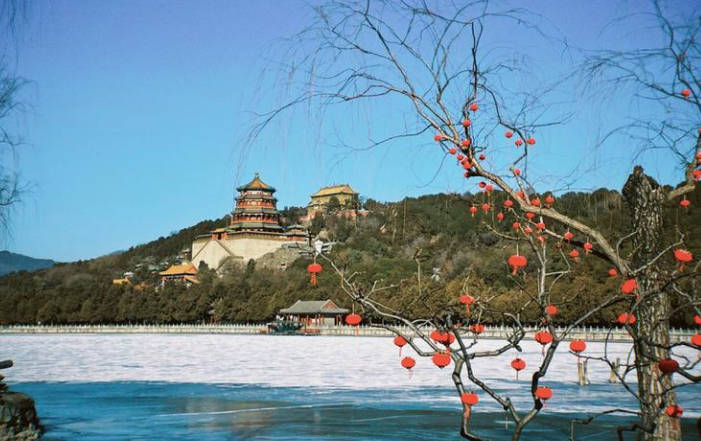
The Summer Palace, the imperial garden of the Qing Dynasty in China, formerly known as Qingyi Garden, is located in the western suburbs of Beijing, 15 kilometers away from the urban area. three thirds. Adjacent to Yuanmingyuan. It is a large-scale landscape garden built on the basis of Kunming Lake and Wanshou Mountain, modeled on Hangzhou West Lake, and drawing on the design techniques of Jiangnan gardens. It is also the most complete preserved royal palace and royal garden, known as the “Royal Garden Museum”. .
Before Emperor Qianlong of the Qing Dynasty succeeded to the throne, four large royal gardens were built in the western suburbs of Beijing. In the fifteenth year of Qianlong (1750), Emperor Qianlong used 4.48 million taels of silver to honor his mother, the Empress Dowager Chongqing, to rebuild it into Qingyi Garden, forming a 20-kilometer royal garden area from the current Qinghua Garden to Xiangshan. In the tenth year of Xianfeng (1860), Qingyi Garden was burned down by the British and French allied forces. It was rebuilt in the 14th year of Guangxu (1888), renamed the Summer Palace, and used as a summer playground. In the twenty-sixth year of Guangxu (1900), the Summer Palace was destroyed by the “Eight-Power Allied Forces” again, and all the treasures were looted. After the fall of the Qing Dynasty, the Summer Palace was destroyed again during the warlord melee and the Kuomintang rule.
2.The Palace Museum故宫博物院
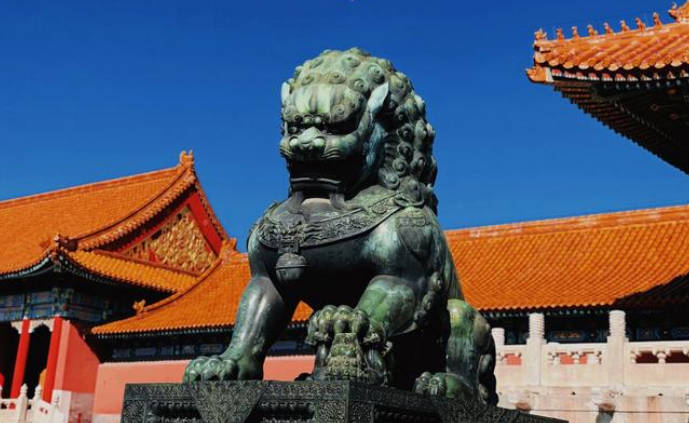
The Palace Museum in Beijing is a comprehensive museum established on October 10, 1925. It is a large-scale comprehensive ancient art museum established on the basis of the Ming and Qing imperial palaces and their collections. It is also the largest museum of ancient culture and art in China.
The Palace Museum covers an area of more than 1 million square meters and preserves about 9,000 ancient buildings. It is the largest and most complete ancient palace complex in China. The predecessor of the Forbidden City was the Forbidden City of the Ming and Qing Dynasties, which was built in the eighteenth year of Yongle (1420) in the Ming Dynasty. A total of 24 emperors lived here in the Ming and Qing dynasties. After Pu Yi abdicated in 1912, the history of the Forbidden City as an imperial palace came to an end. In 1914, the Antiquities Exhibition Office was established in the outer court area; in 1925, the Palace Museum was established in the inner court area; in 1948, the Antiquities Exhibition Office was merged into the Palace Museum. The Palace Museum has a complete collection of cultural relics, with a total of more than 1.86 million pieces (sets), which can be divided into 25 categories according to different textures and forms, including paintings, calligraphy, rubbings, bronzes, and gold and silver wares. Cultural relics account for 90% of the total collection. The Palace Museum presents the long and splendid Chinese civilization to the public through various methods such as the royal palace buildings of the Ming and Qing Dynasties, the original display of palace historical sites, permanent exhibitions of art collections such as treasures, clocks, paintings, ceramics, and sculptures, as well as temporary special exhibitions.
3.Badaling Great Wall八达岭长城
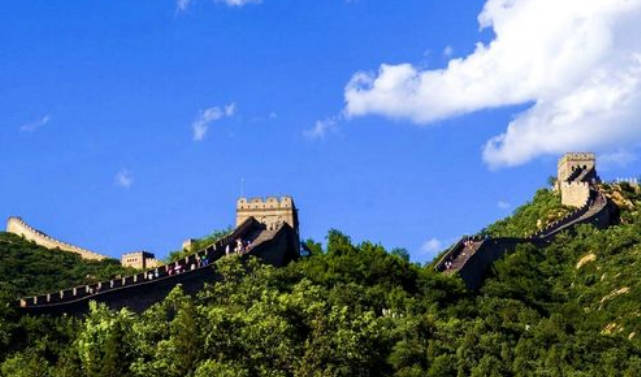
The Badaling Great Wall is located at the north entrance of Guangou Ancient Road, Jundu Mountain, Yanqing District, Beijing. It is an important part of the Great Wall, a great defense project in ancient China, and a pass of the Ming Great Wall. The Badaling Great Wall is an important outpost of Juyongguan. It was said in ancient times that “the danger of Juyongguan is not in the pass but in Badaling”.
The Badaling section of the Great Wall of the Ming Dynasty is called “Yuguan Tianmo”, which is one of the eight scenic spots of Juyongguan in the Ming Dynasty. The Badaling Great Wall is the earliest part of the Great Wall opened to tourists in the Ming Dynasty. The Badaling Scenic Area is mainly based on the Badaling Great Wall. There are modern tourist service facilities with complete functions such as the Badaling Hotel and the Great Wall Museum of China signed by Chairman Jiang Zemin himself.
Badaling Scenic Area is a demonstration site of national civilized scenic tourist areas. It is famous for its majestic landscape, perfect facilities and profound cultural and historical connotations. It is a world-famous tourist attraction.
4.Tiananmen Square天安门广场
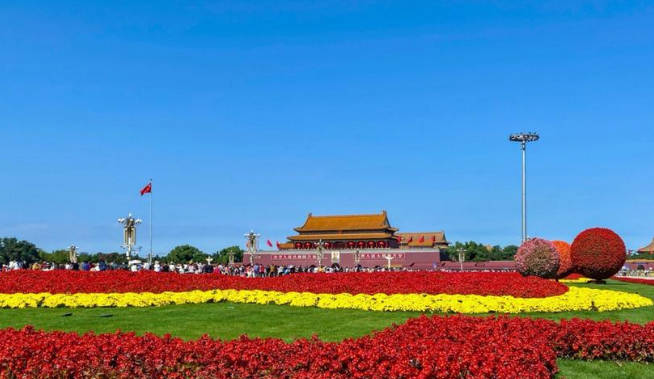
Tiananmen Square is located in the center of Beijing. It is 880 meters long from north to south and 500 meters wide from east to west. It covers an area of 440,000 square meters and can hold a grand gathering of 1 million people. In the square along the central axis of Beijing from north to south stand the national flag pole, the Monument to the People’s Heroes, the Chairman Mao Memorial Hall and the Zhengyangmen Tower.
The ground of the square is entirely paved with light-colored granite strips that have been treated with special technology. In the center stands the Monument to the People’s Heroes and the solemn Chairman Mao Memorial Hall. Tiananmen Square. In 1986, Tiananmen Square was rated as one of the “Sixteen Views of Beijing”, and the landscape was named “Tian’an Liri”.
Tiananmen Square records the indomitable revolutionary spirit and fearless heroism of the Chinese people. The May 4th Movement, the 12.9 Movement, and the 5.20 Movement all left a strong color for the history of modern Chinese revolution here. The place where political and historical events took place is the historical witness of China’s decline and rise.
5.Temple of Heaven天坛公园
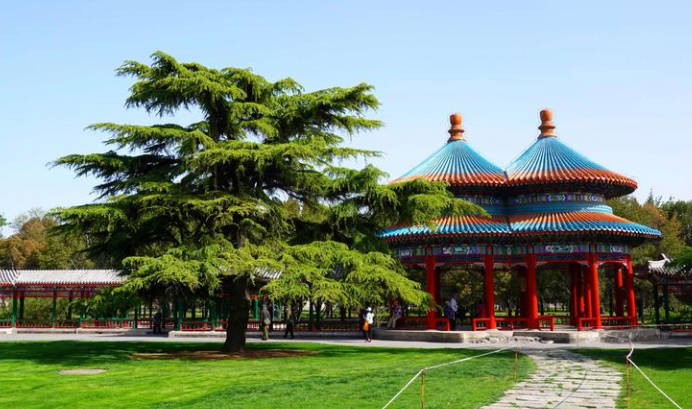
The Temple of Heaven, located at No. 7 Dongli, Tiantan Nei, Dongcheng District, Beijing, was built in the eighteenth year of Yongle in the Ming Dynasty (1420), and was renamed “Temple of Heaven” in the ninth year of Jiajing in the Ming Dynasty (1530). The places for offering sacrifices to heaven and praying for valleys, with a total area of 273 hectares, are the largest extant ancient sacrificial buildings in China. On January 1, the seventh year of the Republic of China (1918), it was opened as the Temple of Heaven Park and opened to the outside world.
The Temple of Heaven Park is surrounded by two altar walls, which are divided into two parts: “inner altar” and “outer altar”. “, the “Circular Mound Altar” for offering sacrifices to heaven on the winter solstice, the fasting palace where the emperor lived before offering sacrifices, and the Kagura Department for performing sacrificial ceremonies and music. architecture. There are a large number of Gubelins planted in the outer altar of the Temple of Heaven Park.
6.Prince Gong’s Mansion恭王府
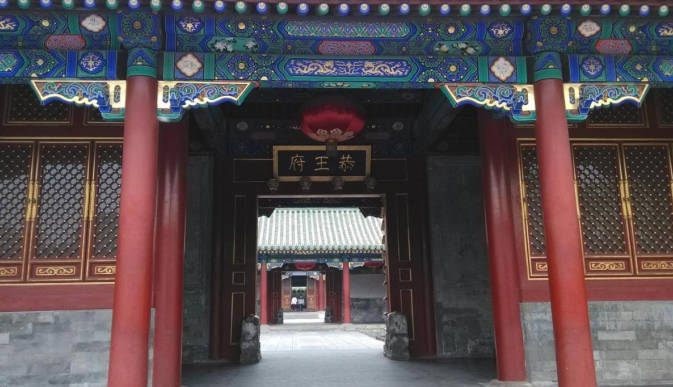
Prince Gong’s Mansion and Garden, a national 5A-level tourist attraction, is located on the west coast of Qianhai and the south bank of Shichahai. In the first year of Xianfeng in the Qing Dynasty (1851), Prince Gong Yixin became the owner of the house, and the name of Prince Gong’s Mansion was derived from this. [3] Prince Gong’s Mansion and Gardens have gone through the historical process of the Qing Dynasty from its heyday to its decline, so there is a saying that “One Prince Gong’s Mansion is half of the history of the Qing Dynasty”. After the founding of New China, under the care of leaders of the State Council such as Zhou Enlai, Gu Mu and Li Lanqing, the restoration work of Prince Kung’s Mansion was completed in 28 years, and it became a Qing Dynasty palace that was completely open to the outside world.
The Wangfu covers an area of about 60,000 square meters and has more than 30 buildings of various types. Its garden is located behind the palace, also known as Cuijin Garden. It was built in the forty-second year of Qianlong in the Qing Dynasty (1777). According to textual research, it was rebuilt on the old garden of the Ming Dynasty. The whole park covers an area of 28,000 square meters. The buildings in the park are divided into east, middle and west roads, and each road is composed of multi-entry courtyards running through a strict central axis from south to north.
The middle road of Wangfu is mainly Yin’an hall and Jiale hall, which are mainly used for sacrifices; the east road is mainly for Duofuxuan and Ledao hall. In front of Duofuxuan hall, there is a wisteria that has grown for more than two hundred years, which is extremely rare in the capital. . The main building in the backward courtyard on the East Road is called “Ledao Hall”, which was the living place of Prince Gong Yixin. The courtyards on West Road are relatively small and exquisite, and the main buildings are Baoguang Room and Xijinzhai. Xijinzhai is the “nanmu hall” of Prince Gong’s mansion. The carvings in the hall are all made of nanmu, which is Heshen imitating the style of Ningshou Palace in the Forbidden City. In the deepest part of the mansion, there is a two-story back cover building, also known as the Treasure Building. There are 44 assorted windows on the back wall. It is said that He Shen can correspond to the types of treasures according to the shape of the windows. The “Western Gate”, “Fu Character Stele” and “Grand Theater Building” in the park are collectively known as the three wonders of Prince Gong’s Mansion. The mansion is full of gardens with the word “Fu”. There are more than 10,000, and together with Kangxi’s “Fu character stele”, the “Fu” culture of Prince Gong’s Mansion is formed.
7.Old Summer Palace圆明园遗址公园
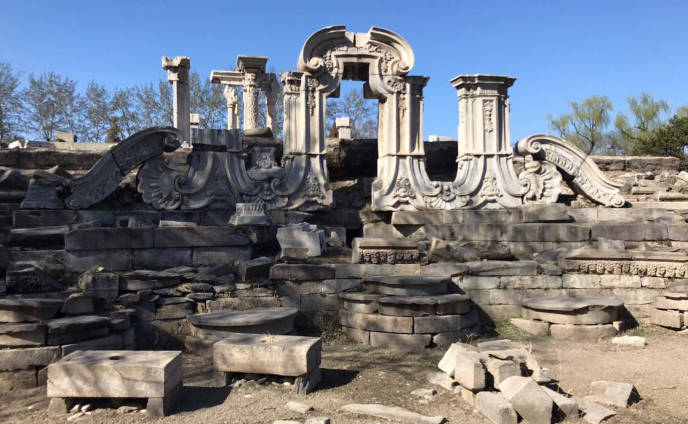
Yuanmingyuan, a large royal garden in the Qing Dynasty in China, is located at No. 28 Qinghua West Road, Haidian District, Beijing. It covers an area of more than 350 hectares, of which the water surface area is about 140 hectares. Collectively referred to as the Old Summer Palace (also known as the Three Gardens of the Old Summer Palace). The Old Summer Palace not only brings together several famous gardens in the south of the Yangtze River, but also transplants western garden architecture, which is the culmination of ancient and modern Chinese and foreign gardening art at that time. One of the treasure houses of human culture, it was the largest museum in the world at that time.
During the last years of Kangxi and Yongzheng, the construction of the Old Summer Palace began. In the second year of Emperor Yongzheng of the Qing Dynasty (1724), the expansion project of the Old Summer Palace officially started. After Emperor Qianlong succeeded to the throne, he adjusted the landscape of the garden in the Old Summer Palace and added architectural groups. In 1860, the British and French invaders set fire to the Old Summer Palace, and the Old Summer Palace and nearby Qingyi Garden, Jingming Garden, Jingyi Garden, Changchun Garden and Haidian Town were all burned. In the twenty-sixth year of the reign of Emperor Guangxu of the Qing Dynasty (1900), the Eight-Power Allied Forces invaded and occupied Beijing, and the buildings and ancient and famous trees in the Old Summer Palace were completely destroyed. After the fall of the Qing Dynasty, the relics of the Old Summer Palace were plundered by bureaucrats, warlords, and profiteers for a long time. After the founding of the People’s Republic of China, the Chinese government began to protect and renovate the Old Summer Palace.
The Yuanmingyuan imitated many famous gardens and scenic spots in various parts of China, especially in the south of the Yangtze River. Its main architectural types include halls, halls, pavilions, platforms, buildings, pavilions, pavilions, corridors, pavilions, rooms, boats, pavilions, halls, and bridges. , gates, walls, towers, and temples, Taoist temples, village houses, markets, etc.; there are 38 types of architectural layouts. Most of the landscaping in Yuanmingyuan takes water as the theme, and some buildings contain a lot of religious elements.
8.Ming Tombs明十三陵
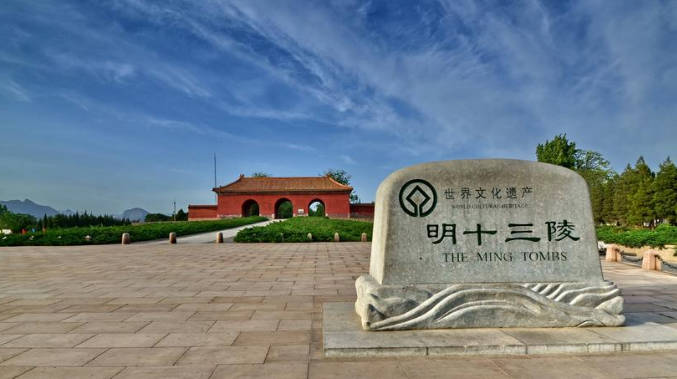
The Ming Tombs are located at the foot of Tianshou Mountain in Changping District, Beijing, about 50 kilometers away from Tiananmen. The Ming Tombs are located in a small basin surrounded by mountains on three sides in the east, west and north. The area around the tomb is surrounded by mountains, the central part is a plain, and there is a meandering river in front of the tomb. From the beginning of Changling in May of the seventh year of Yongle (1409) to the burial of Chongzhen, the last emperor of the Ming Dynasty, in Siling.
The Ming Tombs have a total of 13 imperial tombs, including the Changling Mausoleum of Chengzu Zhu Di, Xianling Mausoleum of Renzong Zhu Gaochi, Jingling Mausoleum of Xuanzong Zhu Zhanji, Yuling Mausoleum of Yingzong Zhu Qizhen, Xianzong Zhu Jianshenmao Mausoleum, Xiaozong Zhu Youtang’s Tai Mausoleum. The Kangling Mausoleum of Wuzong Zhu Houzhao, the Yongling Mausoleum of Sejong Zhu Houcong, the Zhao Mausoleum of Mu Zong Zhu Zaihou, and the Ding Mausoleum of Shenzong Zhu Yijun. The Qingling Mausoleum of Guangzong Zhu Changluo, and the Deling Mausoleum of Xizong Zhu Youxiao. The Siling Mausoleum of Chongzhen Emperor Zhu Youjian. In addition, there are 8 accompanying tombs, including 7 concubine (prince) tombs and 1 eunuch tomb. Its architectural form embodies the feudal rules and regulations of the Ming Dynasty. Both the emperor’s mausoleum and the rear mausoleum are covered with yellow glazed tiles.
The Ming Tombs area covers an area of 40 square kilometers. It is famous for its magnificent scale, complete cemetery system, solemn and harmonious layout, beautiful and quiet scenery, and elegant and simple style.
9.Beijing Olympic Park北京奥林匹克公园
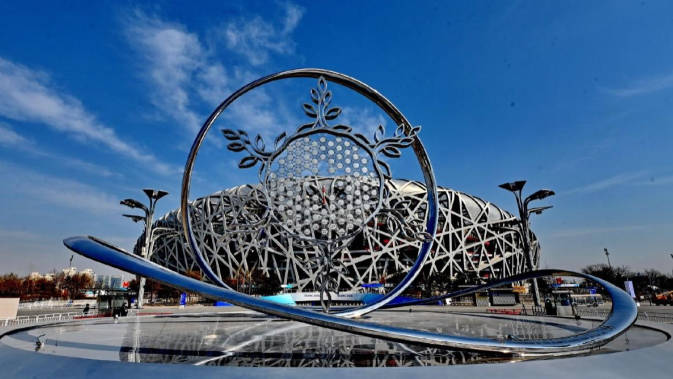
Beijing Olympic Park is located in Chaoyang District, Beijing, at the northern end of the central axis of Beijing, with the south bank of Qinghe River in the north, Beitucheng Road in the south, Anli Road and Beichen East Road in the east, and Lincui Road and Beichen West Road in the west. With an area of 11.59 square kilometers, it embodies the three concepts of “technology, green, and humanities”, and is a new urban area that integrates multiple functions of office, business, hotel, culture, sports, conference, and residence.
During the 2008 Olympic Games, there are Bird’s Nest, Water Cube, National Stadium, National Convention Center Fencing Hall, Olympic Sports Center Stadium, Olympic Sports Center Gymnasium, Yingdong Swimming Pool, Olympic Park Archery Field, Olympic Park Tennis Court, Olympic Park Hockey Field Waiting for 10 Olympic competition venues. In addition, there are 7 non-competition venues including the Olympic Main Press Center (MPC), the International Broadcasting Center (IBC), the Olympic Reception Center, and the Olympic Village (Paralympic Village). It is a comprehensive public activity center for citizens with multiple functions including entertainment, leisure and shopping.
10.Beihai Park北海公园
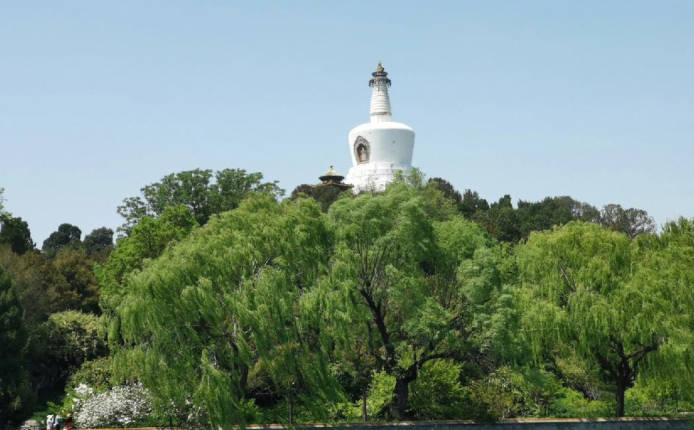
Beihai Park is located at No. 1 Wenjin Street, Xicheng District, Beijing, adjacent to Jingshan Park in the east, Zhongnanhai in the south, and Shichahai in the north. 293,000 square meters), opened as a park in 1925.
The whole Beihai Park is centered on Beihai, where Liao, Jin and Yuan palaces were built, and Ming and Qing were established as imperial gardens, belonging to ancient Chinese royal gardens.